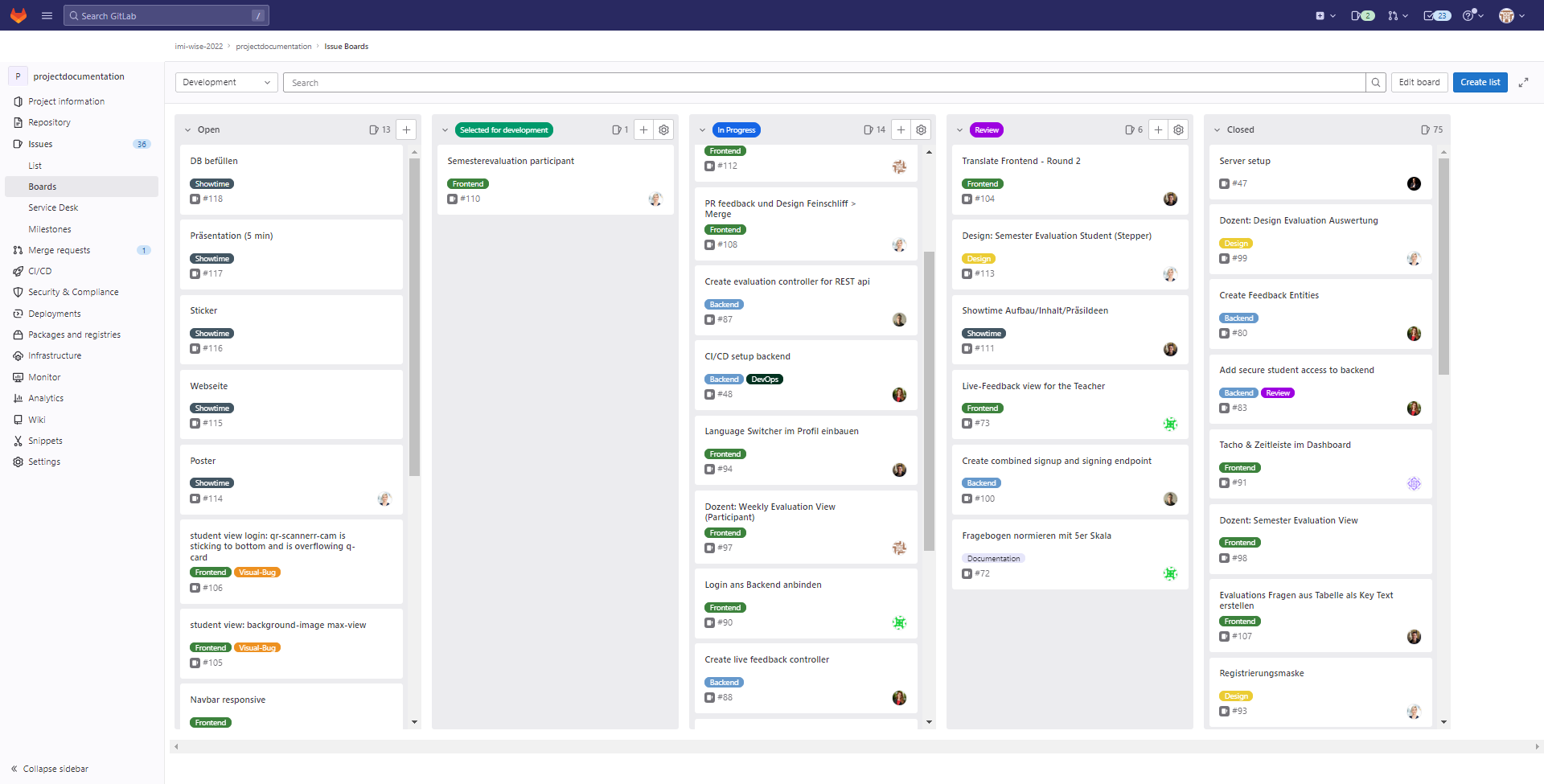The requirements analysis phase of the project was critical in ensuring the successful delivery of a solution that met the needs of both professors and students. To achieve this goal, a comprehensive approach was taken to gather and evaluate all relevant requirements.
The process started with a brainstorming session where all potential requirements were documented. This information was then reviewed and prioritized, focusing on the most important features for both target groups. To validate our assumptions and gain a deeper understanding of the current evaluation methods and communication practices used by professors, in-depth interviews were conducted with a representative sample of the professorial. The insights gathered from these interviews were invaluable in refining our requirements, incorporating both confirmed and newly identified feature ideas. This thorough approach to requirements and analysis allowed us to develop a solution that was tailored to the specific needs of both professors and students, ensuring the application would be effective and well-received by all stakeholders.
